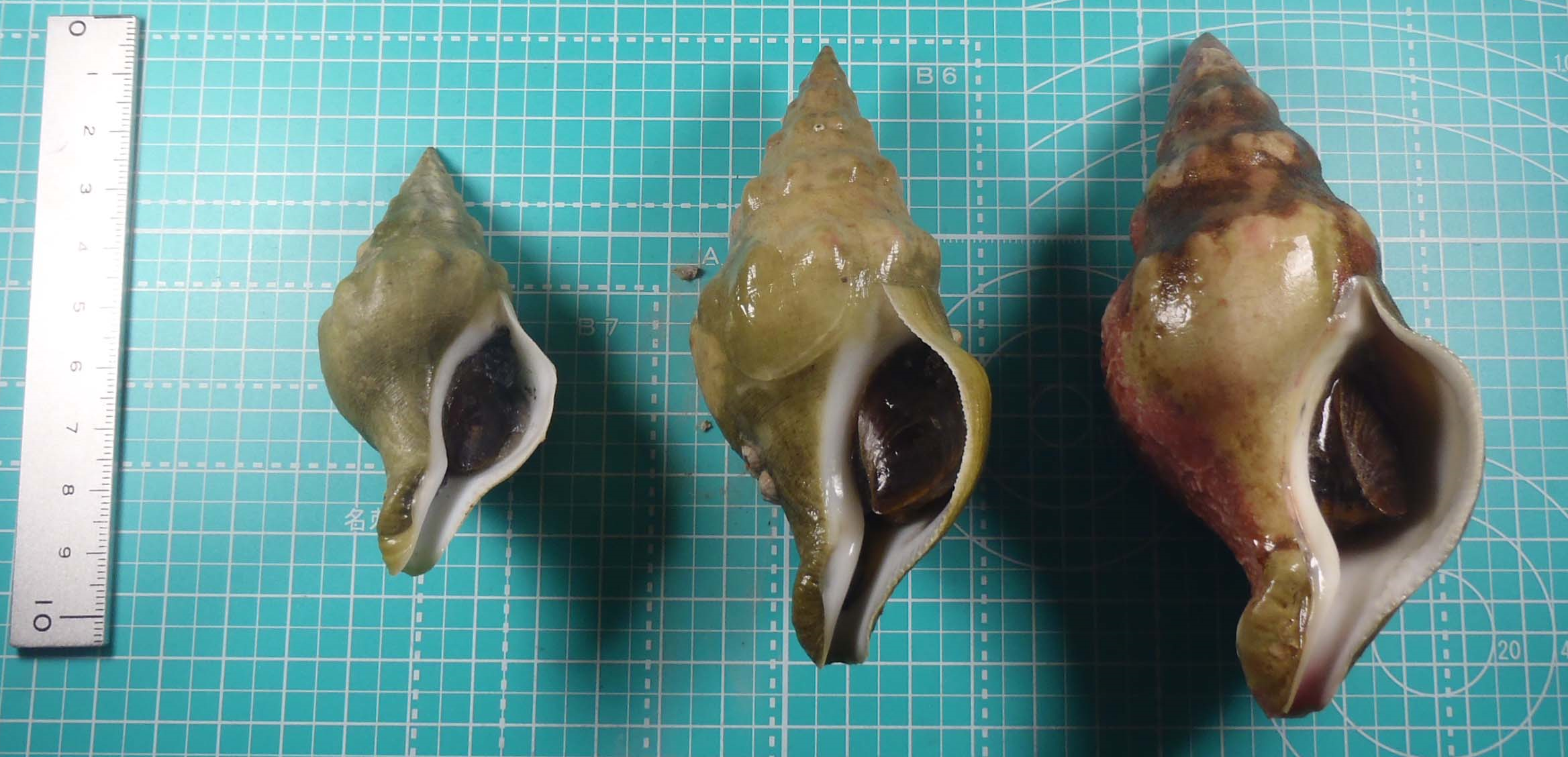Kelletia Lischkei on:
[Wikipedia]
[Google]
[Amazon]
''Kelletia lischkei'' is a
 ''Kelletia lischkei'' is a medium-to-large species of
''Kelletia lischkei'' is a medium-to-large species of
World Register of Marine Species: ''Kelletia lischkei'' (Kuroda, 1938)
Buccinidae Gastropods described in 1938 Marine gastropods {{Buccinidae-stub
species
In biology, a species is the basic unit of classification and a taxonomic rank of an organism, as well as a unit of biodiversity. A species is often defined as the largest group of organisms in which any two individuals of the appropriate s ...
of large sea snail, or whelk, a marine gastropod mollusc in the family
Family (from la, familia) is a group of people related either by consanguinity (by recognized birth) or affinity (by marriage or other relationship). The purpose of the family is to maintain the well-being of its members and of society. Idea ...
Buccinidae
The Buccinidae are a very large and diverse taxonomic family of large sea snails, often known as whelks or true whelks.Bouchet, P.; Gofas, S. (2010). Buccinidae. In: Bouchet, P.; Gofas, S.; Rosenberg, G. (2010) World Marine Mollusca database. Acc ...
, the true whelks.
Description
 ''Kelletia lischkei'' is a medium-to-large species of
''Kelletia lischkei'' is a medium-to-large species of buccinid
The Buccinidae are a very large and diverse Taxonomy (biology), taxonomic family (biology), family of large sea snails, often known as whelks or true whelks.Bouchet, P.; Gofas, S. (2010). Buccinidae. In: Bouchet, P.; Gofas, S.; Rosenberg, G. (201 ...
whelk.
Distribution
The species is endemic to theSea of Japan
The Sea of Japan is the marginal sea between the Japanese archipelago, Sakhalin, the Korean Peninsula, and the mainland of the Russian Far East. The Japanese archipelago separates the sea from the Pacific Ocean. Like the Mediterranean Sea, i ...
, and is found in coastal waters off of South Korea
South Korea, officially the Republic of Korea (ROK), is a country in East Asia, constituting the southern part of the Korean Peninsula and sharing a land border with North Korea. Its western border is formed by the Yellow Sea, while its eas ...
and eastern Japan. Fossils of ''K. lischkei'' occur in the Middle Pleistocene
The Pleistocene ( , often referred to as the ''Ice age'') is the geological epoch that lasted from about 2,580,000 to 11,700 years ago, spanning the Earth's most recent period of repeated glaciations. Before a change was finally confirmed in ...
fossil record of Japan,Ogasawara, K. 2002. Cenozoic Gastropoda. In: Ikeya, N., Hirano, H., Ogasawara, K. eds. The database of Japanese fossil type specimens described during the 20th Century (Part 2). Palaeontological Society of Japan, Special Paper 40. University of Tokyo, Tokyo. and the species bears a resemblance to the extinct fossil species '' Kelletia brevis''.
References
External links
World Register of Marine Species: ''Kelletia lischkei'' (Kuroda, 1938)
Buccinidae Gastropods described in 1938 Marine gastropods {{Buccinidae-stub